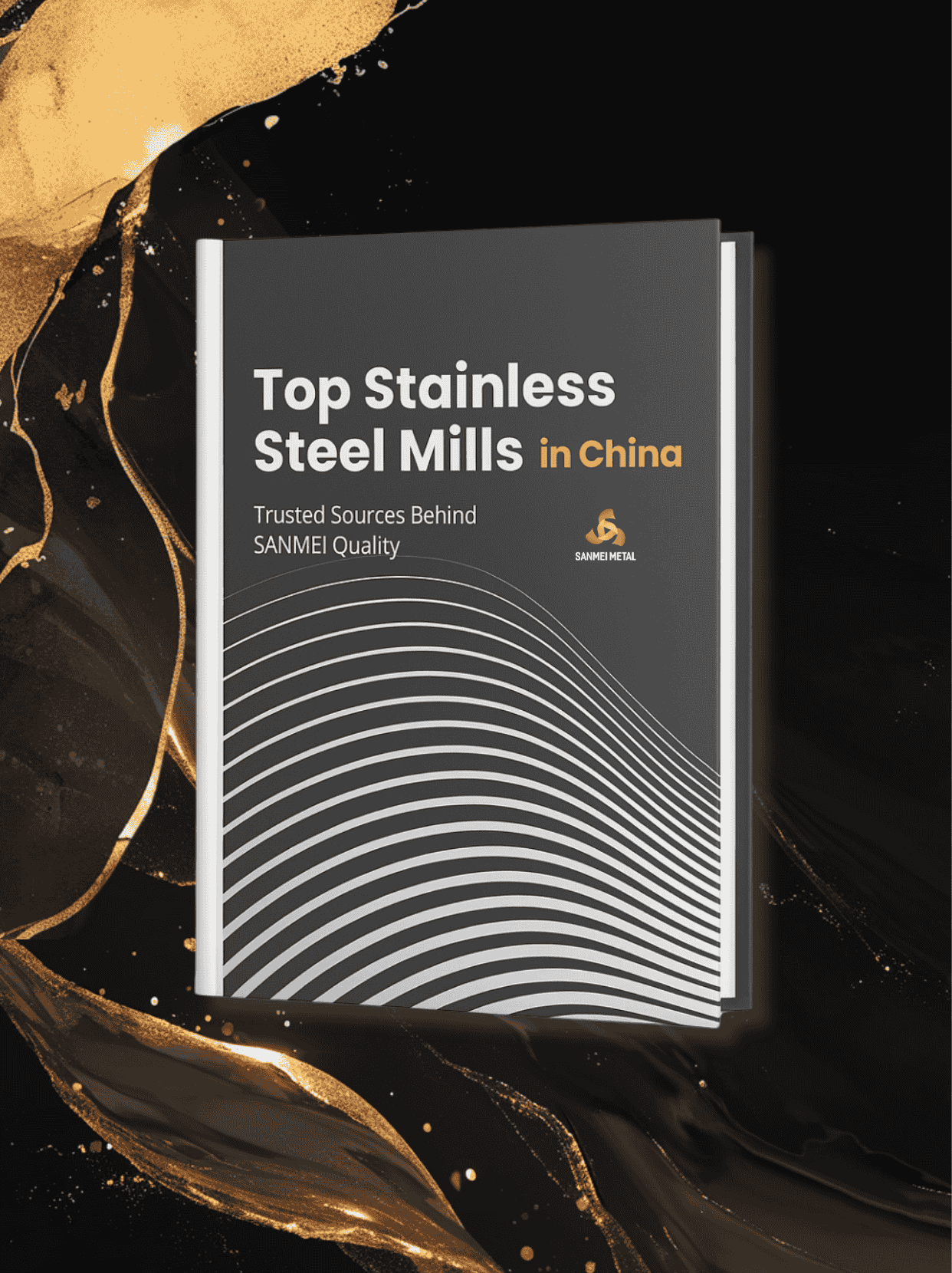
Get Your FREE Access: China’s #1 Steel Mill Dossier
Buyer-Oriented: Match mills by grade/finish/width-thickness/application
BAOWUTsingshanLiscoTisco


Overview
420 stainless steel, known as S42000, is a martensitic, hardenable alloy that stands out for its enhanced strength and hardness compared to other stainless steels like 410 and 416. It contains at least 12% chromium for corrosion resistance and higher carbon content, which increases its wear resistance and allows it to achieve a Rockwell hardness of up to 50 HRC after heat treatment. This steel exhibits good ductility in the annealed condition, but its machinability decreases once hardened beyond 30 HRC. Despite its good corrosion resistance, especially when hardened and polished, it is not as resistant as common austenitic grades and is limited by a loss of ductility at sub-zero temperatures and a loss of strength at elevated temperatures due to over-tempering. Common applications include bushings, dental and surgical instruments, pump parts, valve components, and shafts. It is not recommended for use above tempering temperatures due to a reduction in mechanical properties, and welding is possible with the right techniques .
General Properties
420 stainless steel is a high-carbon martensitic grade that offers a balance of hardness and corrosion resistance. It is known for its high hardness, wear resistance, and moderate corrosion resistance. The steel's composition includes carbon (C: 0.15-0.40%), chromium (Cr: 12.0-14.0%), and other elements in smaller amounts such as manganese (Mn), silicon (Si), phosphorus (P), and sulfur (S) .
Applications
420 stainless steel is used in a variety of applications where strength and durability are essential, such as in cutlery, surgical instruments, and tools. It is also used in precision machinery, bearings, electrical equipment, instruments, transportation vehicles, household appliances, and food utensils.
Corrosion Resistance:
While 420 stainless steel provides good corrosion resistance, especially when hardened and polished, it is not as resistant as common austenitic grades. Its corrosion resistance is compromised at sub-zero temperatures and at elevated temperatures due to over-tempering .
Heat Resistance:
The useful operating range of 420 stainless steel is limited by its loss of ductility at sub-zero temperatures and loss of strength at elevated temperatures due to over-tempering .
Machinability:
420 stainless steel is relatively easy to machine in the annealed condition, but machining becomes more difficult once hardened to above 30 HRC .
Welding:
Welding is not common for this alloy due to its hardening properties, but it is possible with the right techniques and post-weld heat treatment to prevent cracking .
Hot Working:
Hot working of 420 stainless steel can improve its toughness and wear resistance .
Cold Working:
Cold working can increase the steel's hardness and strength while also improving its surface quality and dimensional accuracy .
Annealing:
Annealing is used to soften the steel, improve machinability, and prepare it for further heat treatment processes .
Tempering:
Tempering is used to reduce brittleness and internal stresses after hardening .
Hardening:
420 stainless steel can be hardened to achieve high hardness levels through a process of heating and rapid cooling (quenching) .
| Property | Value |
|---|---|
| Density | 7.74 g/cm³ |
| Modulus of Elasticity | 200 GPa (29 x 10^6 psi) |
| Coefficient of Thermal Expansion | 10.3 μm/m·°C (5.7 μin./in.·°F) |
| Thermal Conductivity | 24.9 W/m·K (14.4 Btu/ft·h·°F) |
| Specific Heat | 460 J/kg·K (0.11 Btu/lb·°F) at 0-100°C (32 to 212°F) |
| Electrical Resistivity | 0.55 μΩ·m at 20°C |
Property | Yield Strength, min. (ksi) | Tensile Strength, min. (ksi) | Elongation, min. (%) | Hardness, max. (Rb) |
420 | 345 (50) | 655 (95) | 25 | 321 HBS |
| Grade | Carbon (C) | Manganese (Mn) | Silicon (Si) | Phosphorus (P) | Sulfur (S) | Chromium (Cr) | Nickel (Ni) | Molybdenum (Mo) | Iron (Fe) |
| 420 | 0.15 - 0.40% | ≤1.00% | ≤1.00% | ≤0.040% | ≤0.030% | 12.0 - 14.0% | ≤0.75% | ≤0.50% | Balance |

420 stainless steel performs exceptionally well in damp or harsh environments, resisting rust and extending the product's lifespan.

SS420 has high strength, making it suitable for applications that require high stress and frequent use, such as tools and medical equipment.

420 stainless steel has a smooth surface that does not easily accumulate dirt, making it easy to clean and maintain, making it very suitable for food processing and medical environments.

| Type | Width (mm) | Weight (MT) | Thickness (mm) | ||||
| 420 Coil | 1000, 1219, 1240, 1500 or Customized | 3-10 | 0.15-3.0 | ||||

| Type | Width (mm) | Length (mm) | Thickness (mm) | |||||||||
| 420 Sheets | 1000, 1219, 1240, 1500 or Customized | 2000, 2438, 2500, 3000, 3048 | 0.3-3.0 | |||||||||
We are committed to giving our customers the best and highest quality service to ensure our customers' satisfaction.









Certified by prestigious institutions and committed to adhering to international standards in every aspect.




Customer feedback is the most authentic reflection of a company's quality.
View more technical references from Sanmei Metal regarding stainless steel coils and stainless steel sheets.
Headquarters:
Creating Center, No.142, Yuhe Road, Lecong Town, Shunde District, Foshan City, Guangdong Province, China. 528315
Factory: Liyuan Logistics City, Chencun Town, Shunde District, Foshan City, Guangdong Province, China. 528313
Australia Local Support Base: (Yatala, QLD) – Coming 2026